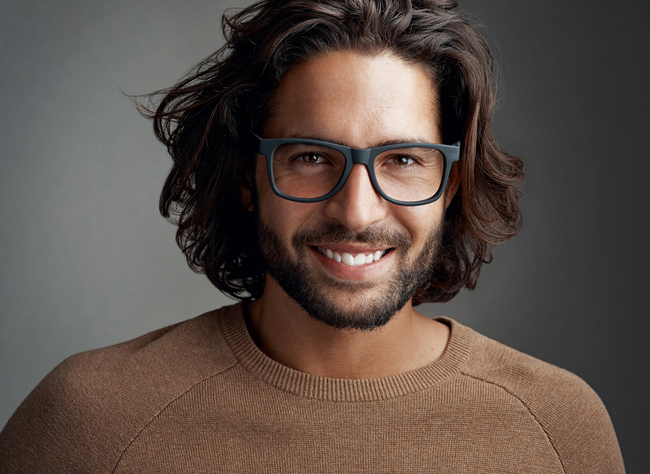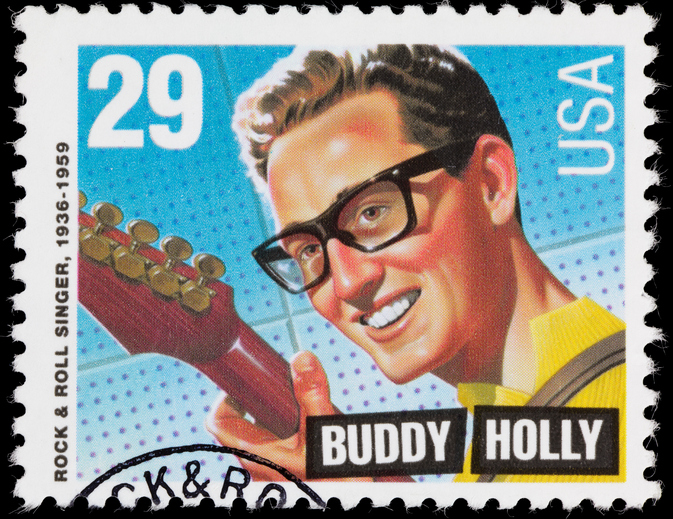By Preston Fassel

April 18, 2018
Selling men’s frames can seem like more of a challenge than selling women’s frames because of two assumptions some practices make: Men don’t like to shop as much as women, and they are less interested in their personal appearance than women are.
These assumptions are no longer as frequently true, and there are opportunities to grow revenues from men’s frames, as I found from years of working an optometric assistant and optician at Texas State Optical Magnolia outside of Houston.
From my personal experience, men and women can be willing to spend the same amount of money on glasses. Men and women both understand the concept of an investment, and presenting a pair of glasses as an important investment can get them to the same level of spending.
The one area of difference I found was that older women were more receptive to spending more money on nice frames and less money on lenses; older men tended to invest more in their lenses as opposed to the frames. With Millennials, and younger Gen-Xers, I see men and women spending equally on frames and lenses.
Focus on Variety Rather than Style
First, more guys want to be fashionable. The caveat to that is that men’s fashion moves more slowly than women’s does—women’s clothes and accessories are more trend driven, whereas men’s styles tend to stay consistent for longer periods of time.
For example, look how little men’s clothing in general has changed since the 1920s. A man in a 1920s’ suit wouldn’t look super out of place today, and a guy in a suit from the 1950s or 1960s would look right at home. The same is true for eyeglasses. With a few exceptions, most men’s styles have been in fashion, and will remain in fashion, for some time. Therefore, in purchasing frames, my focus tends to be less on getting new styles in for men, and more on getting a variety of those styles—different colors, different variations on a particular type of frame.

Buddy Holly in his iconic glasses on a commemorative postage stamp that was released in the 1990s. He wore those glasses in the 1950s, but you would be just as likely to see a similar pair on many men today.
For instance, while I might bring in more cat-eye frames to the women’s section, and more varied geometric shapes, for the men’s frames, I’d bring in different colors, mono-brow-lines and other frame-style variations.
Purchase Same Number of Men’s & Women’s Frames
Today’s men will absolutely shop if they are marketed to. Look how many men’s fashion blogs and lifestyle sites there are online now—their readership represents a huge demographic that’s being forced to shop with niche retailers, or online, because stores are trapped in an “only women shop” mindset.
I can’t tell you how difficult it is sometimes to find something I want because I’ll go into a store, and 75-90 percent of the merchandise is geared toward women. Every holiday season my wife complains how difficult it is for her to find a gift for me because stores disproportionately stock for women.
There’s definitely a major loss of revenue happening right now in dispensaries that disproportionately skew toward women. Our dispensary dedicated an equal amount of board space to women’s frames and men’s frames, with the caveat that some of our men’s frames were “generics,” or unisex, and could be worn either by men or women—mid-sized zyls that fit a wide variety of head shapes and sizes, and which were neither too feminine, nor masculine, and suited both sexes.
We arranged our frames in a gradient: One end of the store would be strictly women’s, the other end strictly men’s, with unisex in the middle. Patients really seemed to like this.
Editor’s note: In the average practice, the frame mix is 30 percent men’s, 30 percent unisex and 40 percent women’s.

A man in the 1980s wears glasses that were common during that era, and which might even be considered hipster-like if purchased today.
Invest in Sports Eyewear
Sportsmen tended to be the only demographic of men on whom I could rely for a second-pair sunwear sale because they saw them as a tool for aiding their chosen activity, though not necessarily as something to protect their eyes.
Don’t Be Afraid of (Some) Fashion-Forward Inventory
I’ve seen guys beginning to dip their toes into the waters of more varied frame types. Especially for the young, artistic, urban set, there’s a tremendous opportunity to profitably broaden inventory horizons.
For example, I’ve seen a lot of that demographic–young and city-based–starting to gravitate toward sunglasses with side-shields, in the style of old-fashioned safety glasses or retro-futurist Victorian goggles. I wouldn’t skew my inventory toward super-adventurous styles, but I would have a small selection on hand to demonstrate that those choices are available for the patients who want them. And there’s nothing wrong with training your optical staff to identify patients, who might be ready to step out of the box, and give them a little nudge.
Editor’s note: The minimum number of frames to carry of any brand line is two vertical frame board columns.

A stylish man of the current era wearing frames that show off his personal style, rather than looking generic.
Offer Larger-Size Frames
One of the many reasons my practice was profitable was because it was one of the only opticals in our area of Houston that catered to men with larger heads. We kept two columns of our frame board dedicated exclusively to large-fit frames. One row was always A&A’s XXL line, while the other varied. Men, who couldn’t find a well-fitting frame in any other nearby optical, knew they could come to us to find what they needed.
If a man seemed to have a sense of humor, we might even say: “We’ve got some frames over here for gentlemen with larger heads.” That was always a surefire conversation-starter, invariably followed by the guy himself making a joke about how everything’s bigger in Texas.
Be Upfront & Transparent About Products & Pricing
Men, and the younger generations in general, appreciate blunt frankness. Be upfront about frame durability, cost and other practical points about the frames you are selling. In general, Baby Boomer women tend to want to make a personal connection with the optician first—develop a rapport and make small talk, and then move on to the sale.
With men, and younger people of both sexes, that pretense is gone. They’re not averse to small talk, as long as it’s honest—if, say, for example, you genuinely like the band on their t-shirt, or if you discover other common ground—but they’re there to buy glasses, and they know you’re there to sell glasses. Much of that social pretense that was once there has been removed. Millennials and Gen-Zers place a high premium on sincerity and authenticity. For older Baby Boomer men, it comes down to—in the words of several of my patients—“Don’t bulls—t me, son.”
 Preston Fassel was in an optician at an independent practice in the Houston metropolitan area for many years. He now consults and writes frequently about how to create a profitable optical. To contact him: prestonfassel@yahoo.com
Preston Fassel was in an optician at an independent practice in the Houston metropolitan area for many years. He now consults and writes frequently about how to create a profitable optical. To contact him: prestonfassel@yahoo.com





















